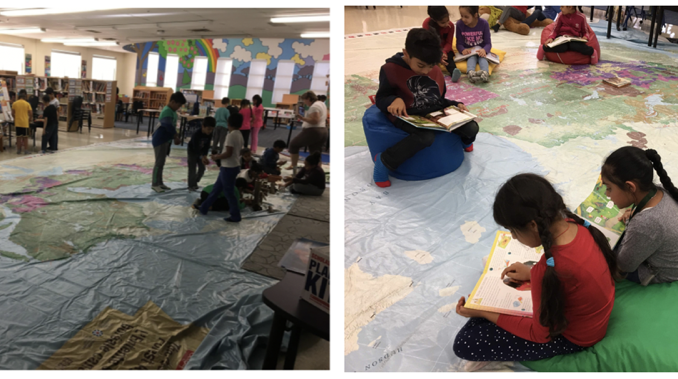
By Beth Lyons
One of the greatest privileges of being a teacher-librarian is fostering a love of inquiry with students and educators. Using the LLC space to set up provocations related to curriculum content, social justice issues, and literacy events are just some of the ways that a teacher-librarian can promote and challenge the learners in the space to think beyond the learning happening in their classroom. Of course, the real magic happens when educators and teacher-librarians co-plan and co-teach from an inquiry stance together in the LLC. Teacher-librarians can help educators take risks with their students in the areas of maker-education, STEM, loose parts and integrated learning by providing examples of these activities in the LLC. By providing educators with the opportunity to explore a variety of inquiry-based provocation stations with their students in the LLC, teacher-librarians can spark in educators a love of hands-on inquiry that can lead to increased student engagement and empowerment. It also helps create a safe space where educators feel empowered to take risks with their students that they may be hesitant to take on their own.
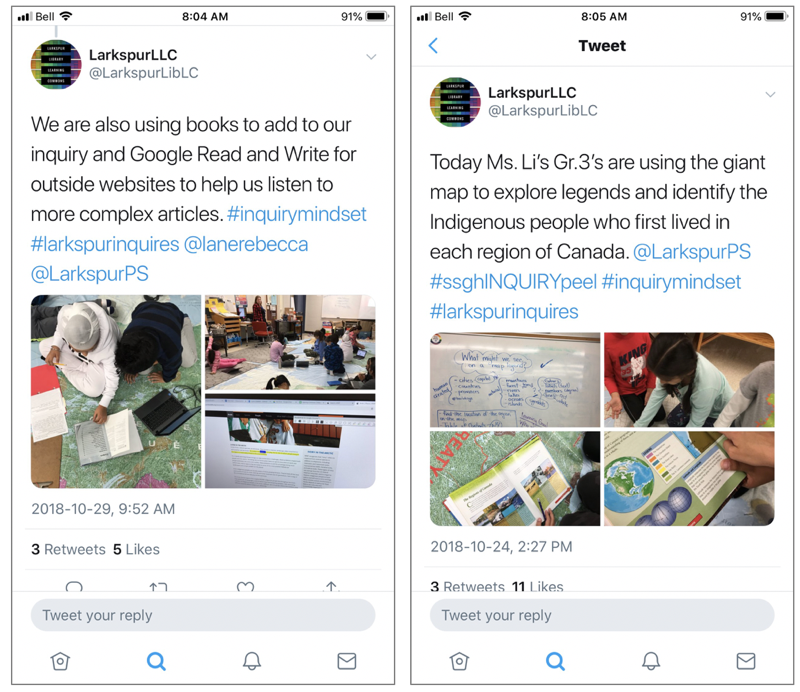
View this video about the start of our inquiry provocations. Check out #larkspurinquires on Twitter for more pictures of our inquiry provocations.
Last spring I read Inquiry Mindset by Trevor Mackenzie and Rebecca Bathurst-Hunt, and I found that it really moved me forward in my understanding of teaching and learning from an inquiry stance. It challenged me to pause and think about my teaching practice and how do educators provide learners with enough time to go deep into their inquiries and passions. One quote that really stood out for me was “Learning is not a checklist of objectives or content-specific aims. Learning is a process demanding time for rich and meaningful reflection” (MacKenzie & Bathurst-Hunt, 2018, p. 4). One goal of creating inquiry provocations in the LLC is to allow time for educators to interact with their students as they begin to work through the inquiry process and to see the deep learning, wondering and questioning that comes from giving students time to interact with materials and their own passions. This helps educators with informative assessment; engaging in conversations with students as they construct knowledge; and helps educators develop individualized next steps for students.
It is important to recognize that educators are also on their own learning journey as they deepen their pedagogical practices and learn about the students in their class. With this understanding in mind, inquiry stations created in the LLC for educators and students to explore provides opportunities for educators to reflect on the process of their own learning from an inquiry stance. In Inquiry Mindset, Mackenzie and Bathurst-Hunt write that “[i]nquiry teachers ask students questions about themselves so they the teacher and the student can learn more about the whole child” (MacKenzie & Bathurst-Hunt, 2018, p. 5). I would go one step further and say that asking questions also lead to the educator learning about themselves as a learner on their own inquiry journey.
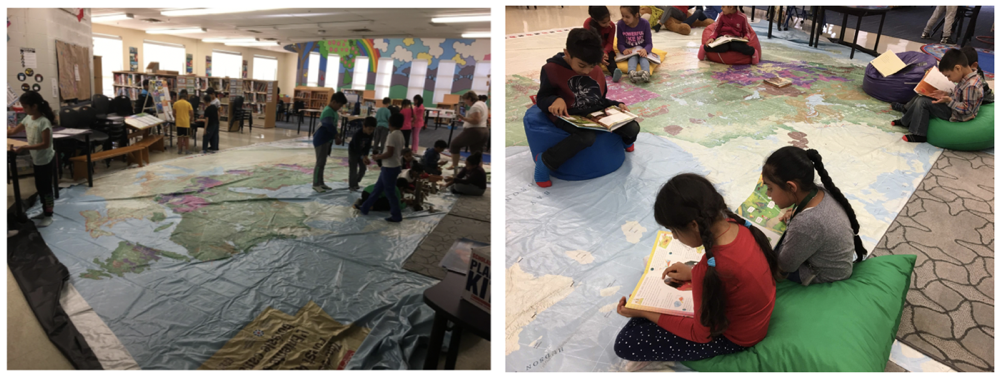
The Peel District School Board has a set of giant maps that schools can borrow throughout the year for up to a month at a time. These maps lend themselves to multiple connection points in the curriculum for all grade levels as educators can use them to weave in concepts of geo-literacy, interconnectedness, inter-relationships, environmental stewardship and human interactions as they explore mapping concepts with students. For the past two years, our school has borrowed The Canadian Boreal Forest Agreement/ Aboriginal Treaties map. My goal was to create a set of inquiry provocations that students from Kindergarten to Grade 5 could explore. A few challenges presented themselves as I began to plan for the inquiry stations:
- Which areas of the curriculum fit across this wide range of grade levels?
- How could I provide provocations that allowed for multiple entry points for learners of multiple abilities?
- What materials might be the most impactful for learners as they explored the stations?
- How might I provide examples of stations that would be simple for educators to re-create in the classroom?
As with all teaching we start with the curriculum in order to set our learning goals. I wanted to create inquiry provocations that were grounded in curriculum content but lent themselves to allowing the learners to uncover the curriculum through questioning, wondering and exploring various concepts. Over the past year I have seen the power of loose parts to engage learners in their inquiry-based learning and hoped to harness that energy once again with our giant map provocations. Using the curriculum as a starting point I created and shared a chart for the educators in my school to use as a reference point before visiting the LLC with their class to engage with the giant map. (The chart can be found at this link: bit.ly/BorealMapIdeas.) The Giant Boreal map and provocations were available for an entire month which allowed for many classes from Kindergarten to Grade 5 to visit and explore the stations. I met with each educator to discuss their goals in having the students visit and interact with the map. We would discuss what previous teaching they had done about mapping or other related concepts, what learning they hoped would be uncovered by their students’ explorations and what types of assessment for learning (observations, conversations, pictures, etc) we would use to guide our planning moving forward. Many educators expressed an interest in coming with their classes to engage in open exploration of the map and provocations in order to gain a better understanding of using loose parts and hands-on materials to promote an inquiry mindset in their classroom. A few educators were already engaged in guided inquiries with their classes and wanted to use the space to spark new ideas and to engage in creating questions with their students that would further or deepen their learning.
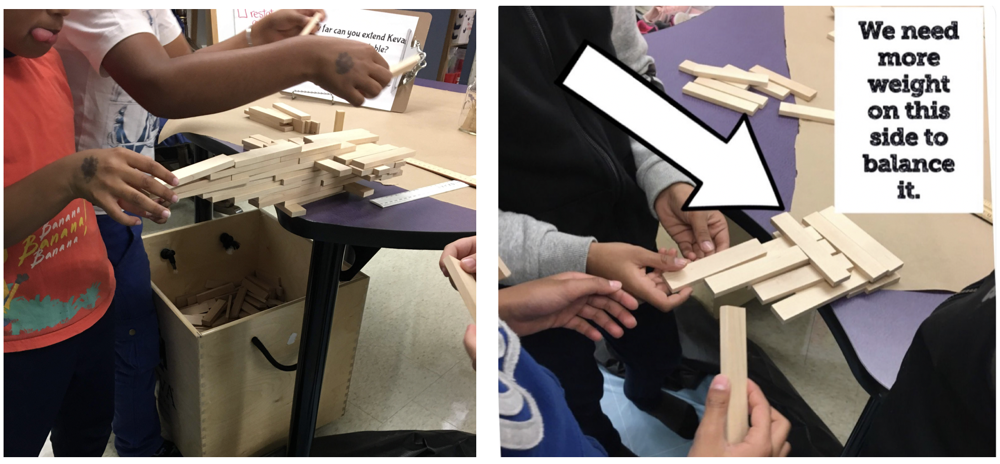
Over the course of the month some of the observations of student (and educator) learning as they interacted with the Boreal Forest map provocations were:
- Students enjoy having the opportunity to explore and tinker with a variety of materials (e.g., loose parts, play dough, building materials, etc) and will often surprise you with the depth of their understandings and wonderings.
- Students will notice and name their own learning while interacting and discussing with their peers. Their use of content specific vocabulary is purposeful and rich as they delve deeper into design thinking through open exploration.
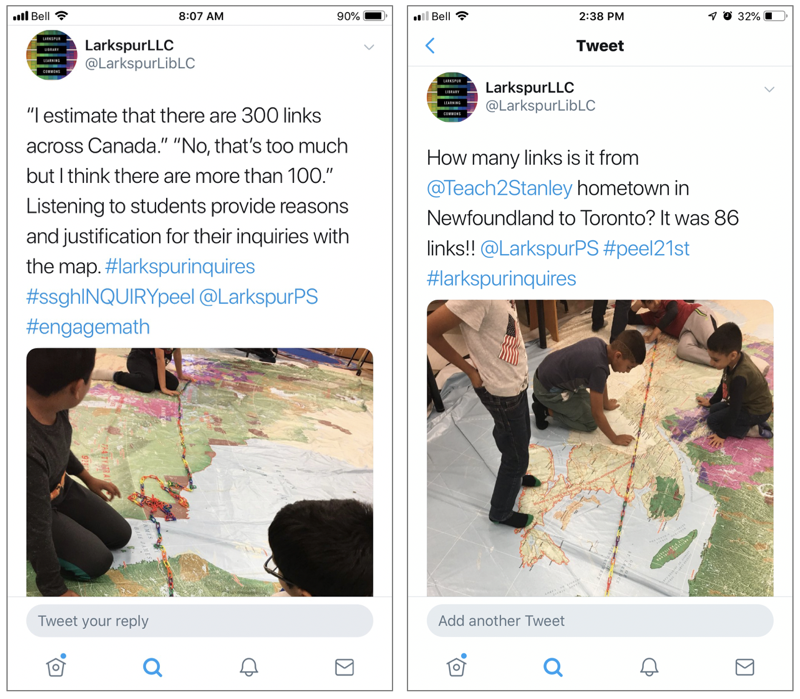
- The value of one-on-one conversations with learners about their tinkering is immeasurable. A quick moment of sitting with a student and simply asking “Tell me about your work?” will provide educators with a deep and rich understanding of student learning. This is especially true for our second-language learners who may not always be able to represent their learning through writing.
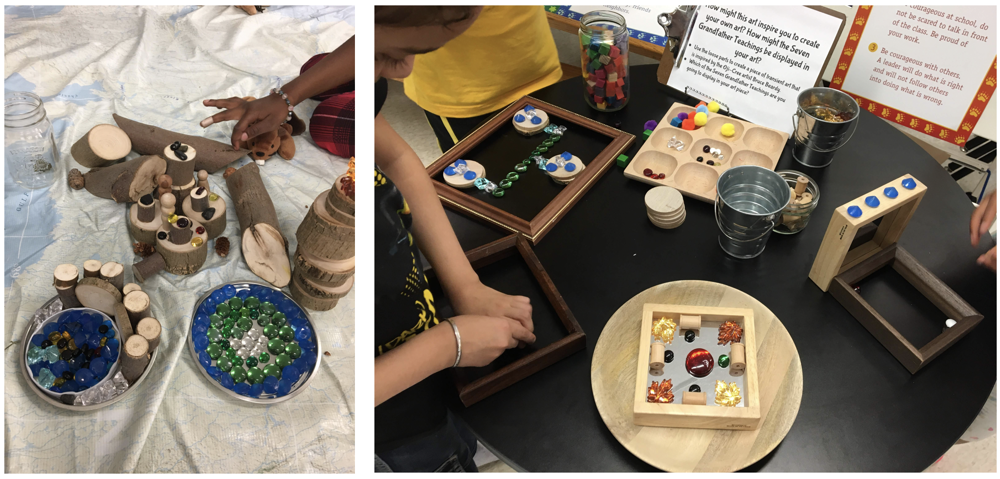
- Students will challenge themselves beyond what the educator has planned. A set of Grade 2 students extended a building challenge as part of our inquiry stations through their ability to wonder and question as they worked. They problem-solved together, created a goal and worked to achieve their goal.

- Educators were excited to see how a simple set of materials could provide deep and complex learning for students when guided by a prompt or inquiry question.
- Educators noticed that the students naturally uncovered the curriculum as they explored and, through discussions and guiding prompts, would continue to stretch in their thinking and learning.
The Provocations
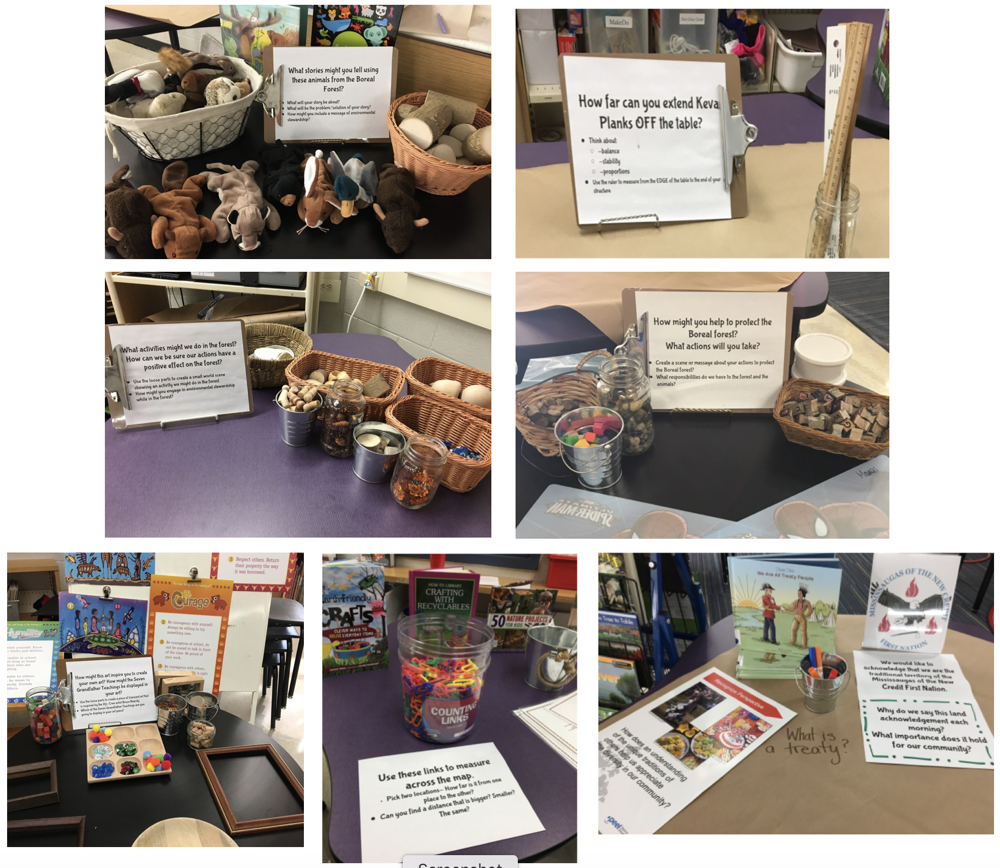
The provocations were designed to be tasks with a low threshold, high ceiling. Each learner would bring their own set of skills and knowledge to the materials and the prompts and be able to move forward on their own continuum of learning. Most classes decided to free flow through the space with learners moving from provocation to provocation as they desired. As educators we observed and noted which spaces held the students’ interest and engagement for longer periods of time or which students might be hesitant to explore with a new material that was unfamiliar to them. There were also students who were dedicated and diligent in ensuring that they attempted each task during their time in the space. By observing the students moving through the provocations the educators noted that they wanted to prompt certain students to stretch and develop a growth mindset by exploring a new task or exploring a new material when they returned to the map or in other cases challenging students to focus on one or two tasks that they felt most drawn to in order to concentrate on the learning involved in the task.
Connecting to The Maker Mindset
Last year a group of staff in our school worked together to deepen our understanding of the maker movement and in particular the idea of a maker culture and not a makerspace. We looked at ways that we could embed maker learning and maker opportunities at all grade levels and across the curriculum. The Boreal map provocations are an extension of this as it shifts the learning to a student-centred model of learning and students are guiding the inquiry based on their prior knowledge, interests, passions and questions. Although the students may often move in a direction that was not anticipated by the educators it is not a direction without purpose. As we discovered through our observations, discussions and questions, the students were telling us what they already knew and what they wanted to learn more about. They were making the connections to the curriculum, we just needed to let go and trust. As Brian Aspinall states, “Letting go means you have set the course, provided scaffolding and created a community of independence. Letting go means kids are passionate about learning, curious about learning and engaged in activities that are changing their world around them.” (Aspinall, 2017) One goal of the inquiry provocations based on the giant Boreal map was for educators to continue on this learning journey and begin to embed a maker culture in their programs. By using materials such as loose parts and Keva planks, the students were focused on the process of their making and not the end product. This allows students to actively engage in the inquiry cycle through the medium of making and allows educators to see that the simplest of materials and prompts can result in deep learning when rooted in a maker culture that embraces play, tinker and student empowerment.
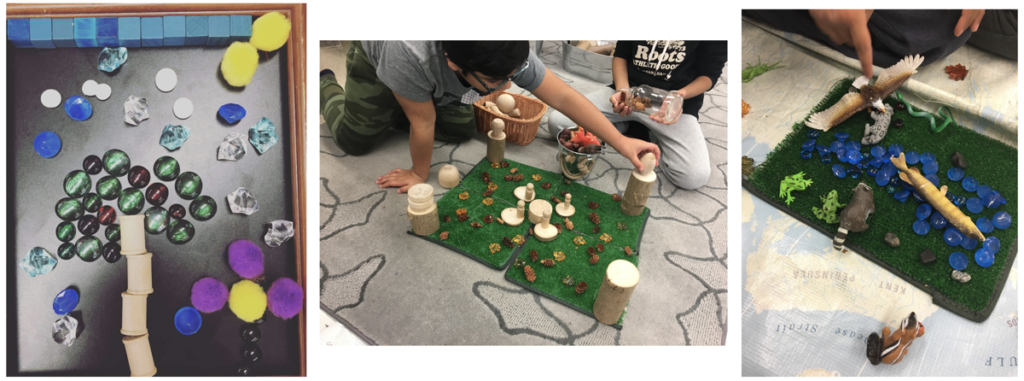
Getting Started
When designing a set of provocations for your library space there are a few guiding questions to help you get started:
- Which areas of the curriculum contain big ideas that run through a variety of grade levels?
- What common learning opportunities (e.g., activities, hands-on materials, essential skills) spiral through the curriculum as students progress from one grade to the next?
- Which materials might provide students with the opportunity to question their current understandings and engage in stretching themselves through open making and risk taking?
As I already had the giant map as a central provocation point for our inquiry it was only natural to look to both the Science and Social Studies curriculums as focal points. In the introduction of the Science and Technology Curriculum,two of the goals state “to relate science and technology to society and the environment” and “to develop the skills, strategies, and habits of mind required for scientific inquiry and technological problem solving” (Ontario Ministry of Education, 2007). The Social Studies Curriculum (Grades 1-6) states the following two goals “develop skills and personal attributes that are needed for discipline-specific inquiry and that can be transferred to other areas in life” and “build collaborative and cooperative working relationships” (Ontario Ministry of Education, 2018). Both of these documents also provide examples of teaching and learning from an inquiry stance. Students in all grades work with mapping skills, discuss ideas of environmental stewardship and the idea of “sense of place” and interrelationships so, as I began to create the provocation stations, I looked for materials that would allow the learners to naturally make connections to these ideas and provide opportunities for educators to prompt their learning through questioning and reflecting.
Loose parts have quickly become a favourite material in our Library Learning Commons as a spark to further inquiry. They provide all students with an entry point to the inquiry, are easily recorded using pictures and can be referred to later as a talking point during student interviews. By providing students with loose parts and an open inquiry prompt, educators are able to see the students engage in critical thinking, reasoning and justifying as their work progresses. This allows for assessment for learning to be ongoing and relevant to the students’ learning in the moment. It also a necessary creative constraint as students must use the materials they have available to tell the story of their learning.
Jumping In
My biggest advice to any teacher-librarian or educator looking to get started with inquiry provocation stations or loose parts is to just jump in. Gather a set of loose materials that are inviting to students – wooden pieces, glass stones, pine cones, rocks, pom-poms, buttons, etc – and give students a simple prompt that connects to their own lived experience. As everyone grows more comfortable with the materials, slowly integrate a familiar curriculum area (e.g., retelling an important part of a picture book or use as story spark for writing). Then stand back and watch the magic happen.
Resources to Guide You
Daly, L., Beloglovsky, M., & Daly, J. (2015). Loose parts. inspiring play in young children. St. Paul, MN: Releaf Press.
MacKenzie, T., & Bathurst-Hunt, R. (2018). Inquiry mindset: Nurturing the dreams, wonders, & curiosities of our youngest learners. Irvine, CA: EdTechTeam Press.
Maker is a Culture, Not a Space. (2017, January 26). Retrieved from http://brianaspinall.com/maker-is-a-culture-not-a-space/
Ontario Ministry of Education. (2007). The Ontario curriculum grades 1‐8: Science and Technology. Retrieved from http://www.edu.gov.on.ca/eng/curriculum/elementary/scientec18currb.pdf
Ontario Ministry of Education. (2010). The Ontario curriculum grades 1-6: Social Studies, grades 7-8 History and Geography. Retrieved from http://www.edu.gov.on.ca/eng/curriculum/elementary/social-studies-history-geography-2018.pdf
Spencer, J., & Juliani, A. J. (2017). Empower: What happens when students own their learning. San Diego: IMpress.
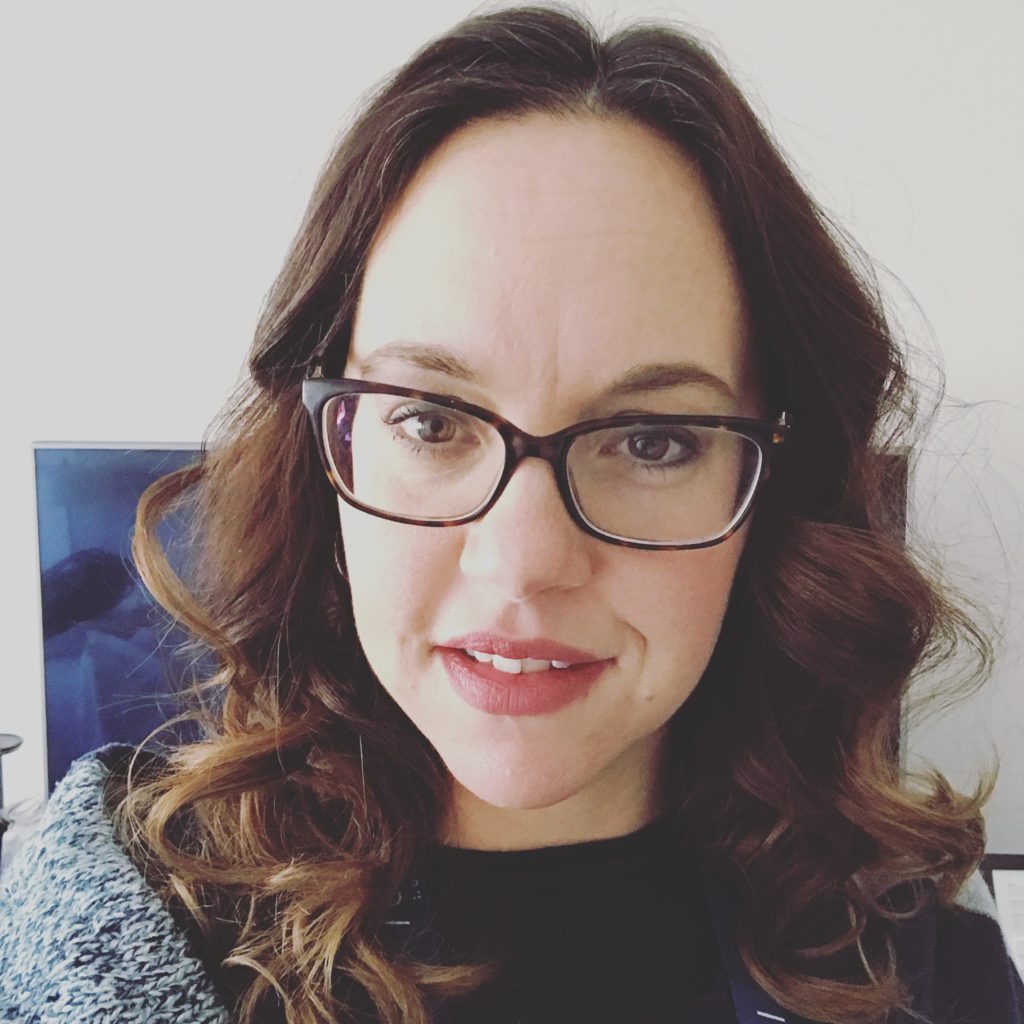
Beth Lyons, teacher-librarian, works at Larkspur Public School in the Peel District School Board. She has taught in the Primary, Junior and Intermediate Divisions and is currently in her second year as a teacher-librarian. She lives with her husband and two daughters in Brampton, Ontario. Beth reflects on her time as a teacher-librarian on her blog The Librarian’s Journey and she can be reached at elizabeth.lyons[at]peelsb.com or by following her Twitter account @MrsLyonsLibrary.